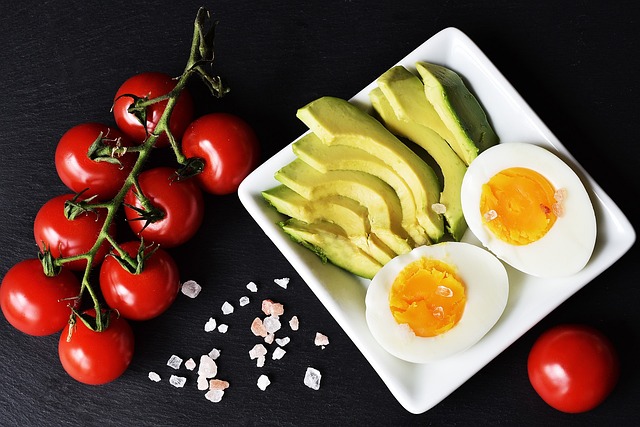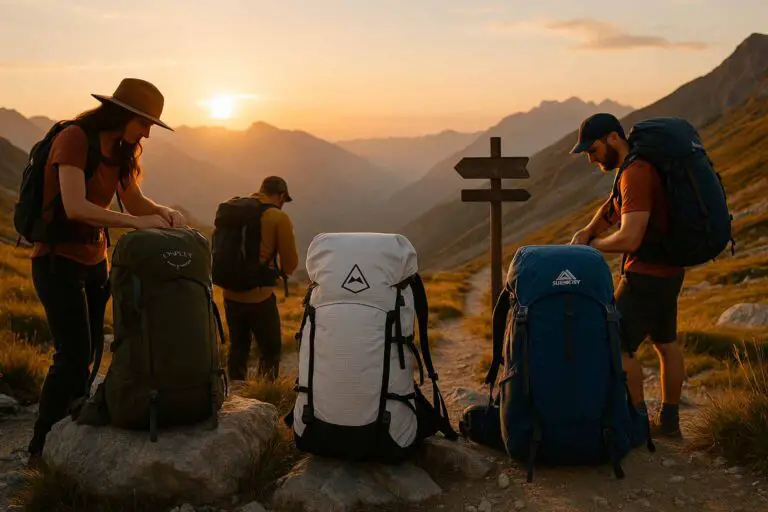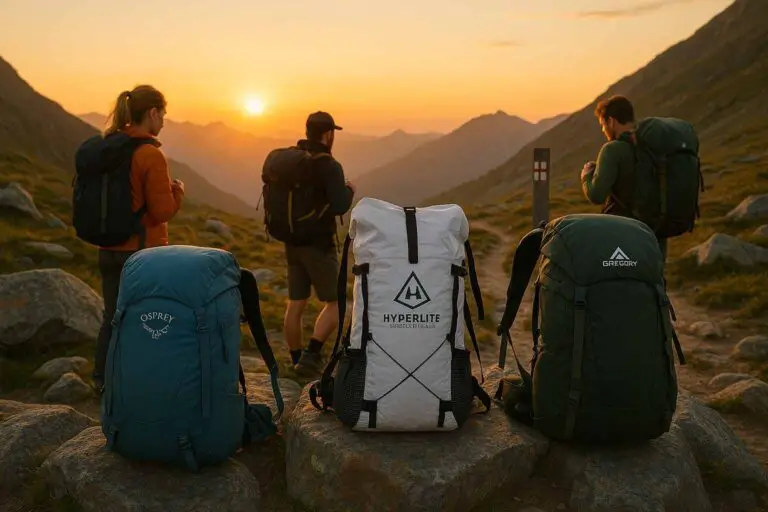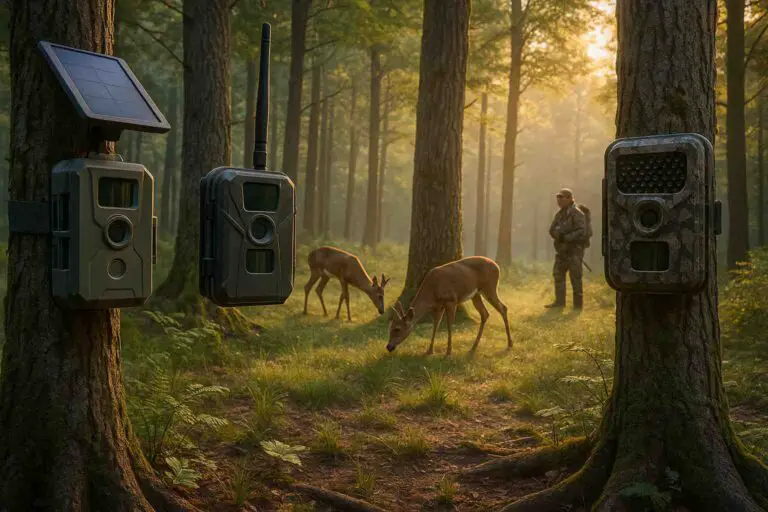Are you ready to discover a whole new way to fuel your backpacking trips while staying true to your low-carb lifestyle? Keto backpacking food refers to the selection of meals and snacks specifically tailored to support the ketogenic diet while on outdoor adventures. The ketogenic diet is a low-carb, high-fat eating plan that aims to keep the body in a state of ketosis, where it relies on fats for energy instead of carbohydrates. When backpacking, it’s crucial for keto enthusiasts to choose foods that are both portable and rich in healthy fats and proteins, while avoiding high-carb options.
Typical keto backpacking food includes fatty meats like bacon and salami, nuts and seeds, cheese, low-carb vegetables, and dehydrated meals that are lightweight and easy to carry.
If you’ve ever felt hesitant about hitting the trails because you didn’t want to stray from your keto diet, worry no more! In this article, I’ll be sharing valuable insights, mouthwatering recipes, and practical tips to make your keto backpacking journey a resounding success. Let’s get started!
Understanding Keto Backpacking and Its Benefits
Before I delve into the delightful world of keto backpacking food, let’s take a moment to understand what the ketogenic diet is all about and the fantastic benefits it offers when combined with your outdoor adventures.
The ketogenic diet, commonly known as keto, is a low carb, high-fat eating plan that triggers your body to enter a state of ketosis. In this metabolic state, your body switches its primary fuel source from carbohydrates to fats, breaking down fats into ketones, which then serve as an efficient energy source.
Now, you might wonder, how does keto align with backpacking and hiking? Well, it turns out that keto can be a game-changer for outdoor enthusiasts. Here are 7 of the remarkable benefits of keto backpacking:
- Sustained Energy Levels: One of the most significant advantages of keto while backpacking is the steady energy supply it provides. With ketones as your primary fuel, you experience reduced blood sugar fluctuations, which means no more energy crashes during long hikes.
- Enhanced Endurance: As your body adapts to burning fat efficiently, you tap into a vast reserve of energy. This endurance boost is especially beneficial during strenuous hikes and long-distance backpacking trips.
- Reduced Hunger and Cravings: The satiating nature of a keto diet helps keep hunger at bay, meaning you won’t constantly be thinking about your next meal, allowing you to focus on the breathtaking scenery and the joy of hiking.
- Lighter Backpack: Keto backpacking meals can be compact and lightweight, as fats are dense sources of energy. Say goodbye to carrying heavy carb-loaded foods and hello to more freedom on the trail!
- Improved Mental Clarity: Many keto enthusiasts report improved mental focus and clarity, which can be invaluable during challenging hikes or navigating unfamiliar terrains.
- Weight Management: For those looking to maintain or lose weight, keto backpacking can be a game-changer. Your body becomes a fat-burning machine, helping you shed excess pounds while enjoying the great outdoors.
- Health Benefits: The ketogenic diet has been associated with numerous health benefits, including better blood sugar regulation, reduced inflammation, and improved heart health.
Now that I’ve covered the benefits, you might be eager to learn how to plan your keto backpacking trip effectively.
Planning Your Keto Backpacking Trip
Planning a successful keto backpacking trip involves thoughtful preparation and consideration of your nutritional needs. Let’s dive into the essential steps to help you create a personalized meal plan and ensure you have everything you need for a fantastic keto adventure:
- Assess Your Nutritional Needs:
- Calculate your daily caloric needs based on factors like age, weight, activity level, and the duration of your backpacking trip.
- Determine your macronutrient requirements, focusing on a high-fat, moderate-protein, and low-carb ratio to maintain ketosis.
- Create a Personalized Meal Plan:
- Outline a meal plan for each day of your trip, including breakfast, lunch, dinner, and snacks. Variety is essential, so you don’t get bored with your food options.
- Incorporate nutrient-dense foods like avocados, nuts, seeds, and fatty cuts of meat to provide sustained energy during your hike.
- Select Lightweight and Portable Foods:
- Opt for lightweight and compact keto-friendly foods to minimize the weight of your backpack. Dehydrated meals, nuts, and seeds are excellent choices.
- Consider single-serving packets for items like nut butter or coconut oil to save space and reduce waste.
- Pack Essential Cooking Gear:
- Depending on your trip’s length and the availability of cooking facilities, pack a lightweight camping stove and fuel canister to prepare hot meals.
- Bring a compact pot or pan, utensils, and a small cutting board to make meal preparation a breeze.
- Plan for Hydration:
- Staying hydrated is crucial during outdoor activities. Bring a portable water filtration system or purifying tablets to ensure a safe water supply.
- Carry an adequate amount of water bottles or hydration packs to stay hydrated throughout your hike.
- Consider Nutritional Supplements:
- Due to the limited food options on the trail, consider bringing keto-friendly nutritional supplements like electrolyte powders or keto protein bars to meet your dietary needs.
- Research Trail Conditions and Facilities:
- Before setting out, research the trail conditions, terrain difficulty, and availability of water sources and camping facilities.
- Plan your meal schedule around your hiking itinerary to ensure you have sufficient energy during challenging sections of the hike.
- Practice Your Meal Plan at Home:
- Prior to your trip, try out your keto backpacking meals at home or during shorter hikes. This will help you identify any adjustments needed and ensure you enjoy the taste and satisfaction of your food choices.
- Leave No Trace:
- Embrace Leave No Trace principles by properly disposing of your waste and not leaving any trace of your presence on the trail.
With a well-thought-out meal plan, the right gear, and a passion for adventure, you’re all set for a fantastic keto backpacking experience.
Keto Backpacking Meals and Recipes
When it comes to keto backpacking meals, the key is to strike the perfect balance between portability, nutrition, and, of course, mouthwatering flavors. Here are 6 delectable keto-friendly meal ideas and recipes that will keep you energized and satisfied throughout your outdoor adventure:
- DIY Dehydrated Meals:
- Keto Beef Jerky: Marinate thin strips of beef in a mix of soy sauce, Worcestershire sauce, and your favorite keto-friendly seasonings. Dehydrate until fully dried, creating a protein-packed, savory snack.
- Zucchini Chips: Slice zucchinis thinly, toss with olive oil and sea salt, then dehydrate until crispy for a delicious crunchy snack.
- Wholesome Keto Breakfast Options:
- Keto Breakfast Scramble: Cook up a tasty mix of scrambled eggs, diced bell peppers, onions, and crumbled bacon or sausage. Pack it in a small container for a satisfying morning meal.
- Avocado and Smoked Salmon: Simply slice an avocado in half, remove the pit, and fill the center with smoked salmon for a nutrient-rich breakfast that requires no cooking.
- Portable Keto Lunch Ideas:
- Lettuce Wraps: Use large lettuce leaves as wraps and fill them with deli meats, cheese, avocado, and your favorite keto-friendly condiments for a refreshing and quick lunch.
- Chicken Salad: Mix canned chicken with mayo, diced celery, and chopped almonds. Enjoy it on its own or as a filling for lettuce wraps or low carb tortillas.
- Delicious Dinners to Refuel:
- Keto Cauliflower Fried Rice: Pre-cook cauliflower rice and pack it with freeze-dried veggies, cooked chicken, and scrambled eggs. Stir fry them together on your camping stove for a flavorful dinner.
- Beef and Broccoli Stir-Fry: Pre-cook beef strips and store them in a ziplock bag. On the trail, sauté with broccoli florets and a soy sauce-based keto-friendly stir-fry sauce for a hearty meal.
- Homemade Keto Snacks:
- Cheese Crisps: Place small mounds of shredded cheese on a parchment-lined tray and bake until crispy. These cheesy delights make for a fantastic on-the-go snack.
- Keto Trail Mix: Mix your favorite nuts and seeds with unsweetened coconut flakes and a few dark chocolate chips for a satisfying and energizing snack.
- Keto Beverages:
- Keto Electrolyte Drink: Create a hydrating beverage by mixing water with a pinch of sea salt, a splash of lemon juice, and a few drops of stevia for sweetness.
- Keto Coffee: Bring along instant coffee and mix it with MCT oil or coconut oil for a creamy and energizing keto-friendly coffee.
Remember, preparation is key when it comes to keto backpacking meals. Pre-cook and dehydrate as much as possible at home to save time and effort on the trail.
Keto Backpacking Snacks for On-the-Go Energy
When you’re on the move during a keto backpacking adventure, having quick and energizing snacks is essential to keep your energy levels up. These keto-friendly snacks are portable, nutrient-dense, and perfect for on-the-go fuel:
- Keto Energy Bars:
- Homemade Keto Bars: Create your own energy bars using a mixture of nuts, seeds, coconut oil, and a low-carb sweetener like stevia or erythritol. Dehydrate or refrigerate them for a convenient and tasty snack.
- Nuts and Seeds:
- Almonds, walnuts, pecans, and macadamia nuts are excellent sources of healthy fats and make for a satisfying and easy-to-carry snack.
- Pumpkin seeds, sunflower seeds, and chia seeds provide a crunchy and nutrient-rich option to keep you going.
- Cheese:
- Hard cheese varieties like cheddar, gouda, or Parmesan can be cut into bite-sized cubes and stored in a small container for a delicious and filling snack.
- Keto Jerky:
- Opt for sugar-free and preservative-free beef, turkey, or salmon jerky for a protein-packed snack that requires no refrigeration.
- Pork Rinds:
- Pork rinds are a crunchy and carb-free snack that offers a satisfying alternative to traditional chips.
- Nut Butter Packets:
- Single-serving packets of almond or peanut butter are convenient and mess-free sources of healthy fats and protein.
- Low-Carb Vegetables:
- Pack cherry tomatoes, cucumber slices, or bell pepper strips in a ziplock bag for a refreshing and hydrating snack.
- Avocado:
- Cut an avocado in half, sprinkle with salt and pepper, and enjoy it directly from the skin for a creamy and nutrient-rich snack.
- Keto-Friendly Protein Bars:
- Look for store-bought protein bars that are specifically designed for a ketogenic diet, ensuring they are low in carbs and high in healthy fats.
- Keto Trail Mix:
- Create your own trail mix with a combination of your favorite nuts, seeds, and unsweetened coconut flakes. Add a few dark chocolate chips for an occasional treat.
Keto Smoothies: Pre-pack keto-friendly smoothie ingredients in small containers or resealable bags. Simply add water, shake, and enjoy a refreshing and nourishing snack.
Don’t forget to pack these snacks in portioned containers or ziplock bags to prevent overeating and minimize waste.
The Best Keto-Friendly Foods for Backpacking
When you’re backpacking on a keto diet, it’s essential to choose nutrient-dense, high-fat foods that provide sustained energy without spiking your blood sugar. Here are 10 of the best keto-friendly foods to pack for your outdoor adventure:
- Fatty Meats:
- Beef jerky (check for low-carb options without added sugars)
- Pepperoni or salami sticks
- Canned tuna or salmon (packed in oil)
- Cheese:
- Hard cheeses like cheddar, Gouda, or Swiss
- Mini Babybel cheese wheels (individually wrapped for convenience)
- Cheese crisps (homemade or store-bought)
- Nuts and Seeds:
- Almonds, walnuts, pecans, and macadamia nuts
- Pumpkin seeds, sunflower seeds, and chia seeds
- Nut butters (in single-serving packets)
- Nutrient-Rich Oils and Fats:
- Coconut oil or MCT oil (great for adding to coffee or smoothies)
- Olive oil (use for dressings and cooking)
- Avocado oil (ideal for high-heat cooking)
- Low-Carb Vegetables:
- Bell pepper strips
- Cucumber slices
- Cherry tomatoes
- Avocados:
- Avocados are a perfect on-the-go snack due to their natural packaging.
- Keto Bars and Snacks:
- Look for store-bought keto-friendly protein bars, fat bombs, and snacks designed specifically for a low-carb diet.
- Keto-Friendly Beverages:
- Water (stay hydrated!)
- Sugar-free electrolyte powders or drops
- Instant keto coffee or tea packets
- Dehydrated Keto Meals:
- Prepare and dehydrate your favorite keto meals in advance, such as cauliflower rice stir-fry or keto chili, for a satisfying dinner on the trail.
- Dark Chocolate:
- A small amount of high-quality dark chocolate (at least 70% cocoa) can be a delightful treat without breaking ketosis.
Don’t forget to read labels carefully and avoid hidden sugars and high-carb ingredients in packaged foods.
Tips for Thriving on Keto During Long Hiking Trips
Thriving on a keto diet during long hiking trips requires some additional planning and considerations to ensure you stay in ketosis and maintain optimal energy levels. Here are 12 valuable tips to help you make the most of your keto journey on extended hikes:
- Gradual Adaptation: If you’re new to the keto diet, it’s best to start before your hiking trip. Give your body time to adapt to using fats as the primary fuel source. Sudden dietary changes can lead to temporary fatigue and discomfort.
- Plan Adequate Snacks: Long hikes can burn a lot of energy, so pack plenty of keto-friendly snacks like nuts, cheese, jerky, and homemade energy bars. Having easy-to-reach snacks will keep you fueled throughout the day.
- Hydration and Electrolytes: Staying hydrated is crucial on any hike, but on keto, you may need more water due to increased water loss. Ensure you replenish electrolytes through electrolyte powders or low-carb beverages.
- Portion and Caloric Control: While keto foods can be calorically dense, avoid overeating to maintain your energy balance. Pack portioned snacks to prevent overconsumption.
- Include High-Fiber Foods: Incorporate fibrous vegetables like broccoli, cauliflower, and leafy greens to support digestion and maintain bowel regularity during your hike.
- Carb Cycling (Optional): Some keto hikers find success in strategically incorporating slightly higher carb options on longer hiking days to provide an extra energy boost. Consider adding small portions of berries or other low-carb fruits if it aligns with your goals.
- Fats and Oils: Prioritize healthy fats like avocados, nuts, and olive oil, as they provide sustained energy. Consider adding MCT oil to your coffee or meals for a quick source of ketones.
- Prioritize Protein: Make sure you’re getting enough protein to support muscle recovery and overall health. Portable protein sources like canned tuna or salmon can be excellent options.
- Mind Your Macros: While it’s essential to maintain ketosis, be mindful of your overall macronutrient balance. A well-rounded diet with sufficient protein and fats will support your body during strenuous hikes.
- Rest and Recovery: Give yourself time to rest and recover after a long day of hiking. Adequate sleep and relaxation are crucial for overall well-being and energy replenishment.
- Stay Prepared: Check your hiking route, understand the terrain and distances, and plan your meals accordingly. Having a clear understanding of your journey will help you prepare and pack accordingly.
- Test and Adjust: Before embarking on an extended hike, experiment with your keto meals and snacks during shorter hikes to see how your body responds. This will allow you to fine-tune your plan for the big trip.
Remember, each individual’s needs may differ, so listen to your body and adjust as needed to ensure a successful and enjoyable keto backpacking experience.
Packing and Storing Keto Backpacking Food
Packing and storing your keto backpacking food efficiently is crucial for a successful and enjoyable trip. Here are 12 practical tips to help you keep your food fresh, organized, and easy to access:
- Use Airtight Containers: Invest in high-quality, airtight containers to store your dehydrated meals, nuts, seeds, and snacks. Airtight containers will prevent moisture from seeping in and keep your food fresh throughout your hike.
- Vacuum Seal Dehydrated Meals: If you’ve prepared dehydrated meals in advance, vacuum-sealing them will not only keep them fresh but also reduce their size, saving valuable space in your backpack.
- Pack Smaller Portions: Instead of carrying large quantities of food, pack smaller portions of each item in resealable bags. This helps with portion control and makes it easier to distribute weight in your backpack.
- Organize with Ziplock Bags: Use labeled ziplock bags to sort different types of food, such as nuts in one bag, cheese in another, and so on. This will make it easier to find what you need without rummaging through your entire pack.
- Separate Fresh from Dehydrated: Keep fresh produce like avocados and vegetables separate from dehydrated items to prevent crushing or spoilage. Fresh foods should ideally be consumed early in your hike.
- Consider Bear Canisters: If you’re backpacking in bear country, use bear canisters to store your food overnight and keep wildlife from accessing it.
- Freeze Water Bottles: Freeze some of your water bottles before your hike to use as ice packs for perishable items. As they melt, you’ll have chilled water to stay hydrated.
- Use Insulated Bags: For perishable items that need extra cooling, consider using insulated bags or pouches to maintain their freshness.
- Prioritize Weight Distribution: Place heavier food items closer to your back and lighter items towards the outside of your backpack. This distribution helps maintain balance and reduces strain on your back.
- Store Food Away from Toiletries: Keep your food and toiletries separate to avoid contamination and unwanted smells on your food.
- Replenish Along the Way: Plan your hike to pass through towns or resupply points where you can restock on fresh produce, meat, and other essentials.
- Pack Out Waste: Respect the environment by packing out all food wrappers and waste, leaving no trace of your presence.
Efficiently organized supplies will free up your mind to fully immerse yourself in the beauty of nature and the joy of hiking!
Keto Backpacking Food on a Budget
Embarking on a keto backpacking adventure doesn’t have to break the bank. With some smart planning and budget-friendly choices, you can enjoy a nutritious and satisfying keto diet while keeping costs in check. Here are 12 tips for keto backpacking food on a budget:
- DIY Dehydrated Meals: Dehydrating your own meals at home is often more cost-effective than purchasing pre-made dehydrated options. Buy ingredients in bulk and prepare large batches of keto-friendly meals to dehydrate.
- Buy in Bulk: Purchase nuts, seeds, and other keto snacks in bulk to get better deals and save money in the long run. Look for discount stores or wholesale retailers for cost-effective options.
- Seasonal Produce: Choose fresh produce that is in-season as it tends to be more affordable. Plan your meals around seasonal vegetables and fruits to keep costs down.
- Opt for Affordable Proteins: Canned tuna or salmon, chicken thighs, and ground beef are often more budget-friendly than expensive cuts of meat. Look for sales or discounts on protein sources.
- Freeze-Dried Vegetables: Instead of fresh vegetables, consider using freeze-dried vegetables for your meals. They are lightweight, have a long shelf life, and can be more economical than fresh produce.
- Make Your Own Keto Snacks: Prepare your own keto-friendly snacks like cheese crisps, keto bars, or nut clusters at home. They can be tastier and less expensive than store-bought options.
- Eggs: Eggs are an affordable and versatile keto food. Hard-boil some eggs for an easy on-the-go snack or cook scrambled eggs with veggies for a satisfying meal.
- Affordable Fats: Coconut oil and olive oil are healthy fats that are relatively budget-friendly and can be used in various dishes.
- Share Costs with Friends: If you’re hiking with a group, consider sharing the cost of certain ingredients or meals. Pooling resources can help everyone save money.
- Plan and Prep: Plan your meals in advance to avoid impulse purchases and food waste. Having a clear meal plan will help you stick to your budget.
- Reuse Containers: Save money on storage by reusing containers and ziplock bags. Just make sure they are clean and airtight for food storage.
- Shop Sales and Discounts: Keep an eye out for sales, discounts, and coupons on keto-friendly items. Stock up on essentials when they are on sale.
With some creativity and resourcefulness, your keto diet can be both delicious and economical during your outdoor adventures!
Safety and Precautions for Keto Backpackers
Safety should always be a top priority for backpackers, and those following a keto diet should take additional precautions to ensure their well-being during outdoor adventures. Here are some safety tips and precautions for keto backpackers:
- Stay Hydrated: Proper hydration is crucial on any hike, but even more so for those on a ketogenic diet. Keto can increase water loss, so make sure to drink plenty of water throughout your trip. Consider using electrolyte powders or drops to maintain a healthy balance of electrolytes.
- Know Your Limits: Be aware of your physical capabilities and choose hikes that align with your fitness level. Long hikes on a keto diet may require some adjustment, so consider shorter or less challenging routes if needed.
- Test Your Meals: Before heading out on a long hike, test your keto backpacking meals during shorter hikes to ensure they provide enough energy and keep you satiated. This will also help you identify any potential digestive issues.
- Pack Adequate Snacks: Bring enough keto-friendly snacks to keep your energy levels up throughout the day. Have snacks readily available to prevent hypoglycemia or low blood sugar episodes.
- Be Prepared for the Unexpected: Carry a first aid kit and know how to use it. Pack items like bandages, antiseptic wipes, pain relievers, and any necessary medications you might need.
- Inform Others: Let someone know about your hiking plans, including your intended route and estimated return time. In case of emergencies, this information can be crucial for your safety.
- Avoid Risky Foods: While on the trail, avoid raw or undercooked foods that may increase the risk of foodborne illnesses. Stick to well-cooked and safe-to-eat keto meals.
- Watch for Signs of Ketosis: Familiarize yourself with the symptoms of ketosis and dehydration. If you experience signs like excessive thirst, dizziness, or fatigue, take a break, hydrate, and consider adjusting your meal plan if necessary.
- Plan for Weather Changes: Be prepared for sudden weather changes by packing appropriate clothing, gear, and shelter options. Weather extremes can impact your keto backpacking experience.
- Respect Nature: Follow Leave No Trace principles by disposing of waste properly, respecting wildlife, and leaving nature as you found it.
- Seek Medical Advice: If you have any pre-existing health conditions or concerns, consult with your healthcare provider before embarking on a long hiking trip on a keto diet.
Take the time to plan and prepare, and always be open to making adjustments as needed to ensure your well-being throughout your outdoor adventure.
Conclusion
In conclusion, keto backpacking opens up a world of adventure and culinary delights without compromising your low carb lifestyle. Throughout this article, you’ve explored the ins and outs of keto backpacking meals, snacks, and planning strategies, ensuring you have all the tools to embark on thrilling outdoor journeys while staying in ketosis.
However, it’s important to provide clarification on a specific topic mentioned earlier. While some keto backpackers may choose to implement carb cycling on longer hiking days, it’s essential to do so with caution and consideration of individual preferences and health goals. Carb cycling involves strategically incorporating slightly higher-carb options, such as low-carb fruits, to provide an additional energy boost. While this may work for some individuals, others may prefer to maintain strict ketosis throughout their journey.
As always, before making any significant changes to your dietary plan, it’s best to consult with a healthcare professional or a registered dietitian, especially if you have specific health conditions or concerns.
In all aspects of keto backpacking, from meal planning to safety precautions, remember to listen to your body and adjust as needed. Embrace the wonders of nature, relish the delectable keto treats, and cherish every moment of your hiking adventures. With proper preparation, a friendly budget, and a passion for the great outdoors, you can conquer the trails as a confident and content keto backpacker. Happy hiking!
Related: The Ultimate Backpacking Food List: How To Pack Light And Eat Well On The Trail








